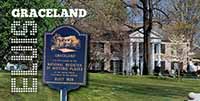
Picking the right type of home construction is a big deal. Most homes you'll see are either stick-built (wooden frames) or masonry (brick, stone, concrete).
Stick-built homes give you more design options and go up faster. Masonry homes stand strong against storms and often last longer. But which one fits your needs and budget better?
Let's break down what makes each type of residential construction special, so you can make an informed decision.
Quick House Type Comparison
- Stick-built homes: Wooden frames, faster to build, easier to customize, might cost less upfront
- Masonry homes: Brick/stone/concrete, stronger against weather, lower energy bills, last longer
- Best for tight budgets: Usually stick-built (but consider long-term costs too)
- Best for custom designs: Stick-built offers more freedom
- Best for severe weather areas: Masonry holds up better
What Is a Stick-Built Home?

A stick-built home isn't necessarily a log home—even brick-clad houses usually have a wooden frame. The name comes from the fact that it's a house built "stick by stick" on your lot. The builder frames it with wooden beams (the "sticks") right where your house will stand.
This is probably what comes to mind when you think of a "normal" house being built. You see the wooden skeleton go up first, then everything else gets added later.
Most neighborhoods are filled with stick-built homes. They're what most mortgage lenders and insurance companies are used to dealing with. Because they're the most common home type, they're also called "traditional" and "conventionally framed."
Stick-Built vs. Modular: Which Makes More Sense?
If a stick-built home and a modular home are both built with wood, what makes them different? It's not the materials—it's the process.
Stick-built homes are "site-built," constructed from scratch on your property. Modular or "prefab" homes are built in chunks in a factory, then transported to your lot and assembled like a jigsaw puzzle.
Once they're completed (assuming the modular home installer did a good job) they're pretty much indistinguishable.
There are a LOT of misconceptions about modular homes out there—especially with how quickly modular homes have improved over the past few decades. Let's clear the air:
- Stick-built and modular homes use the same quality of materials.
- Stick-built and modular homes are built to the same building codes.
- Lenders don't differentiate between stick-built and modular homes.
- Stick-built doesn't appreciate more than modular—once they're built, there's no real difference.
- Modular homes aren't mobile/manufactured homes.
What most people mean when they say "manufactured home" are homes built on a steel chassis for mobility and which only have to conform to federal HUD codes. Most of the confusion and stigma comes from thinking factory-built = manufactured = this type of home.
A modular home is literally manufactured, but in terms of real estate, they're not the same. Modular homes have to conform to local codes and are permanently attached to foundations. They're stick-built homes built in factories.
Trying to decide between stick-built and modular? The right choice depends on what matters most to you.
Stick-built homes let you more easily create exactly what you want. Need a unique layout or special features? Stick-built gives you that freedom. While good homebuilders usually have a portfolio of building plans they've done before, you can ask for changes or even sit down with an architect and come up with an entirely new design.
Modular homes come together much faster since large sections are built in factories. They're mass-produced, which has good sides and bad sides. They're usually cheaper upfront—factories can buy and store materials in bulk, and they waste less since they're operating in controlled conditions. However, if you need more customization than choosing which modules you want, most of your cost savings are going to disappear.
If you're worried about the quality of your build, know that it all comes down to who you work with—no matter what kind of home you're building.
Why People Love Stick-Built Homes
Stick-built homes have some clear advantages that make them the most popular choice for homebuyers.
Want a new construction home that's truly YOURS? Stick-built wins here. You can move walls, add windows, raise ceilings, or create unique spaces. You can even make changes partway through the build as you see it take shape.
A masonry home gets even more expensive than a stick-built when you start adding design complexity.
That rolls into the biggest benefit: cost. Lumber is cheap compared to brick or stone. Wood houses are easier and faster to build, so you save on labor costs. Need to reduce the cost of building a home? You'll probably save around 12% on a stick-built home compared to a masonry home.
The Downsides of Stick-Built Homes
Before jumping into a stick-built project, know the challenges you might face.
Building from scratch costs more than modular options. Custom work and longer construction timelines mean bigger checks to write.
Time is another factor. Expect at least 4–6 months for site-built construction—and bad weather can stretch that timeline even longer. On the other hand, masonry takes longer to build than stick.
Wood-framed homes also attract unwanted guests like termites and can suffer from moisture damage if not properly protected.
What Is a Masonry Home?

A masonry home is built primarily with brick, stone, concrete blocks, or similar materials instead of wood framing.
These materials create super-strong walls that hold up the rest of the house. Some masonry homes are ALL masonry, while others combine these materials with some wood elements.
Masonry construction has been around for thousands of years—think of those old European buildings that have stood for centuries. Modern masonry homes use similar principles but with updated techniques and materials.
The look is distinctive, with exposed brick or stone often being a key selling point both inside and outside the home.
Why Masonry Homes Make Sense
Masonry homes offer serious advantages that make them worth considering despite the higher price tag.
Built to last? Absolutely. Brick and stone homes can stand for generations with minimal structural issues. They laugh off storms that would damage stick-built homes.
Siding replacement? Please. You don't even need to repaint, because they're beautiful as-is.
Fire concerns? Masonry won't burn like wood does. This extra protection might even lower your insurance costs.
Pests and termites? Bricks and concrete aren't edible. The maintenance savings can seriously add up.
But maintenance isn't the only savings. Tired of high energy bills? Masonry walls have a high thermal mass. That means it takes a lot more energy to raise their temperature. They soak up the sun during the day when it's hot and release the heat at night when it's cool. Easy way to have more stable indoor temperatures year-round.
The Problems with Masonry Homes
Masonry homes aren't perfect for everyone. Know these drawbacks before committing.
The biggest issue? Cost. Brick, stone, and similar materials cost more upfront than wood framing. They're heavier, so harder to transport. Skilled masonry workers command higher wages too.
Building takes longer with masonry. Each brick must be placed by hand, and mortar needs time to cure properly. A masonry home could take months longer to complete than a stick-built home—and a longer timeline is already one of the downsides of buying new construction.
When repairs are needed, they're not DIY-friendly. Finding someone skilled in masonry repair can be challenging and expensive.
Want a truly unique design? Masonry can limit your options. Curvy walls or unusual shapes are harder with brick than with wood framing.
In earthquake zones, traditional masonry can crack or crumble without special reinforcement techniques. The same goes for areas with soil that shifts a lot.
If not insulated properly, those thick walls can actually make your home LESS efficient in extreme climates.
Pick a Home You'll Feel Good Living In
Both stick-built and masonry homes can be great choices depending on your situation.
Stick-built homes win for design flexibility and customization. If you want something truly unique or need to build quickly, stick-built is probably your better bet.
Masonry homes stand out for durability and lower long-term costs. In areas with harsh weather or where energy costs are high, the extra upfront investment often pays off.
Your budget, timeline, local climate, and personal preferences should guide your decision. Talk to local builders about what works best in your area.
The right home is one that fits how you live, what you can afford, and what helps you sleep better at night knowing you made a sound investment.



